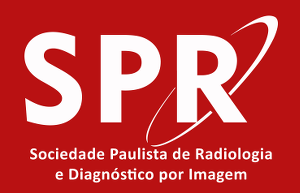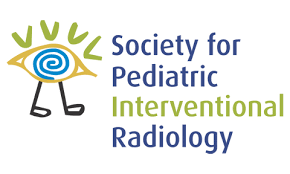
ANIBAL MORILLO
Fundación Santa Fe de Bogotá, Colômbia
Jefe Sección Radiología Intervencionista
Departamento de Imágenes Diagnósticas
Fundación Santa Fe de Bogotá
Doctor en Medicina Y Cirugía. Facultad de Medicina
Universidad Javeriana, 1983.
Especialista en Radiología. Hospital San Ignacio
Universidad Javeriana, 1988.
Visiting Fellow, Sección de Radiología Vascular e Intervencionista, Departamento de Radiología, Hospital Jackson Memorial, Universidad de Miami, Miami, EE.UU., Agosto a octubre de 1988.
Visiting Fellow, Centro de Resonancia Magnética, Departamento de Radiología, Universidad de Miami, Miami, EE.UU. Noviembre de 1988 a enero de 1989.
Visiting Fellow, División de Neurorradiología, Departamento de Radiología, Hospital Universitario Thomas Jefferson, Filadelfia, EE.UU. Septiembre de 1992 a enero de 1993.
Visiting Fellow, Departamento de Neurorradiología, Hospital Infantil de Filadelfia, Filadelfia, EE.UU. Febrero de 1993.
Visiting Fellow, División de Resonancia Magnética, Hospital de la Universidad de Pensilvania, Filadelfia, EE.UU. Marzo a agosto de 1993.
Visiting Fellow, Sección de Radiología Intervencionista, Hospital de la Universidad de Pensilvania, Filadelfia, EE.UU. Septiembre a noviembre de 1993.
Visiting Fellow, Sección de Mamografía, Departamento de Radiología, Hospital de la Universidad de Pensilvania, Filadelfia, EE.UU. Noviembre a diciembre 1993.
Visitante, Equipo de Neurocirugía Endovascular y Radiología Intervencionista (ENERI – Dr. Pedro Lylyk), Buenos Aires, Argentina. Abril y Mayo de 2002.
Departamento de Imágenes Diagnósticas
Fundación Santa Fe de Bogotá
Doctor en Medicina Y Cirugía. Facultad de Medicina
Universidad Javeriana, 1983.
Especialista en Radiología. Hospital San Ignacio
Universidad Javeriana, 1988.
Visiting Fellow, Sección de Radiología Vascular e Intervencionista, Departamento de Radiología, Hospital Jackson Memorial, Universidad de Miami, Miami, EE.UU., Agosto a octubre de 1988.
Visiting Fellow, Centro de Resonancia Magnética, Departamento de Radiología, Universidad de Miami, Miami, EE.UU. Noviembre de 1988 a enero de 1989.
Visiting Fellow, División de Neurorradiología, Departamento de Radiología, Hospital Universitario Thomas Jefferson, Filadelfia, EE.UU. Septiembre de 1992 a enero de 1993.
Visiting Fellow, Departamento de Neurorradiología, Hospital Infantil de Filadelfia, Filadelfia, EE.UU. Febrero de 1993.
Visiting Fellow, División de Resonancia Magnética, Hospital de la Universidad de Pensilvania, Filadelfia, EE.UU. Marzo a agosto de 1993.
Visiting Fellow, Sección de Radiología Intervencionista, Hospital de la Universidad de Pensilvania, Filadelfia, EE.UU. Septiembre a noviembre de 1993.
Visiting Fellow, Sección de Mamografía, Departamento de Radiología, Hospital de la Universidad de Pensilvania, Filadelfia, EE.UU. Noviembre a diciembre 1993.
Visitante, Equipo de Neurocirugía Endovascular y Radiología Intervencionista (ENERI – Dr. Pedro Lylyk), Buenos Aires, Argentina. Abril y Mayo de 2002.
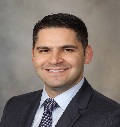
BERNARDO MENDES
Mayo Clinic - Rochester, EUA
Bernardo C. Mendes, M. D. is a Senior Associate Consultant in the Division of Vascular and Endovascular Surgery at Mayo Clinic, and is Assistant Professor of Surgery at Mayo Clinic College of Medicine and Science. Dr. Mendes received his medical degree from the Universidade Federal de Santa Maria, Rio Grande do Sul, Brazil in 2008 and completed general surgery residency at the Irmandade da Santa Casa de Misericordia de Sao Paulo, Brazil, in 2012. He subsequently joined the Division of Vascular and Endovascular Surgery at Mayo Clinic as a Research Fellow under the mentorship of Dr. Gustavo S. Oderich, with focus on endovascular treatment of complex abdominal and thoracoabdominal aortic aneurysms. He joined the vascular surgery integrated residency program in the Division of Vascular and Endovascular Surgery at Mayo Clinic in 2013, during which time he received a number of honors, including the Fellow Teacher of the Year Award in 2018, and the Mayo Brothers Distinguished Fellowship Award in 2017, the highest honor a trainee can receive at Mayo Clinic. He joined the faculty of the Division of Vascular and Endovascular Surgery in 2018 and was named Assistant Professor of Surgery in 2019. Dr. Mendes is a reviewer for the Journal of Endovascular Therapy and Annals of Vascular Surgery. To date, he has delivered 40 presentations in national and international meetings, and published over 50 peer-reviewed articles, book chapters, editorials or abstracts. His main clinical interests are complex aortic pathology, fenestrated and branched stent grafts and endovascular treatment of peripheral arterial disease.

EDUARDO EYHEREMENDY
Argentinean College of Vascular and Interventional Radiology (CARVI), Argentina
President of the Argentinean College of Vascular and Interventional Radiology (CARVI), Argentina
Vascular and Interventional Radiologist, member of the European Board of Interventional Radiology and Fellow of the American Society of Interventional Radiology (SIR).
Practice in Argentina, Chairman of Radiology Department of the German Hospital since 2006.
Has experience in Vascular and non-vascular procedures, focused on Interventional Oncology.
Member of 12 national and international scientific societies. President of the Argentinean College of Vascular and Interventional Radiology (CARVI), board member of the Argentinean Society of Radiology and the Iberoamerican Society of Interventional Radiology (SIDI). Member of the SIR Standard of Practice Committee.
Reviewer of national journals of Radiology and Orthopedics, Vascular journals from Spain and former reviewer of the Journal of Vascular and Interventional Radiology (JVIR). Presented 72 abstracts in national and international meetings in South America, Europe, Asia and US. Was an invited lecturer in 95 activities in South America, Europe and US. Wrote 27 scientific papers and collaborated in 4 books.
Vascular and Interventional Radiologist, member of the European Board of Interventional Radiology and Fellow of the American Society of Interventional Radiology (SIR).
Practice in Argentina, Chairman of Radiology Department of the German Hospital since 2006.
Has experience in Vascular and non-vascular procedures, focused on Interventional Oncology.
Member of 12 national and international scientific societies. President of the Argentinean College of Vascular and Interventional Radiology (CARVI), board member of the Argentinean Society of Radiology and the Iberoamerican Society of Interventional Radiology (SIDI). Member of the SIR Standard of Practice Committee.
Reviewer of national journals of Radiology and Orthopedics, Vascular journals from Spain and former reviewer of the Journal of Vascular and Interventional Radiology (JVIR). Presented 72 abstracts in national and international meetings in South America, Europe, Asia and US. Was an invited lecturer in 95 activities in South America, Europe and US. Wrote 27 scientific papers and collaborated in 4 books.

ESTEBAN MENDARO
Navy Hospital, Buenos Aires, Argentina
Interventional Radiologist.
Medical Director of Investigaciones Vasculares, Navy Hospital, Buenos Aires.
Chief of Cath Lab, Sanatorio de la Providencia, Buenos Aires.
Associate interventional radiologist at the Angiography and Vascular Interventionist aerea in the Italian Hospital, Buenos Aires.
Medical Director of Investigaciones Vasculares, Navy Hospital, Buenos Aires.
Chief of Cath Lab, Sanatorio de la Providencia, Buenos Aires.
Associate interventional radiologist at the Angiography and Vascular Interventionist aerea in the Italian Hospital, Buenos Aires.

GUADALUPE MERCEDES LUCÍA GUERRERO AVENDAÑO
Hospital General de México, México
- Médico Cirujano, egresada de la Facultad de Medicina de la U.N.A.M., Ciudad Universitaria.
- Especialidad Tutelar en Parasitología Clínica en el Instituto de Nacional de Pediatría y Facultad de Medicina de la U.N.A.M, Ciudad Universitaria.
- Médico Especialista en Radiodiagnóstico, Hospital Tacuba, I.S.S.S.T.E. con aval Universitario por la U.N.A.M.
- Subespecialidad en Radiología Intervencionista, Hospital General de México, Secretaría de Salud.
- Maestría en Administración de Sistemas de la Salud por el ISAP Incorporada a la SEP (2006-2008).
- Profesor Ayudante en el Departamento de Ecología Humana de la Facultad de Medicina de U.N.A.M (1984-1988).
- Profesor Titular del Curso Universitario de Radiología e Imagen y posteriormente de Imagenología Diagnóstica y Terapéutica de la U.N.A.M., con sede Hospital General de México (2006-2012).
- Profesor Titular del Curso de Alta Especialidad en Posgrado, Radiología Vascular e Intervencionista en el H.G.M. del 2008 a la fecha.
- Miembro del Subcomité Académico de Imagenología Diagnóstica y Terapéutica, U.N.A.M. 2005 a 2015.
- Editor Fundador de la Revista de Anales de Radiología, México, 2002.
- Editor de la Revista Anales de Radiología, México, de 2002 hasta 2013.
- Directora General de la Revista Médica del H.G.M. (2014-2015).
- Revisor de Artículos de la Revista Cirugía y Cirujanos de la Academia Mexicana de Cirugía.
- Co- editor de la Revista Cirugía y Cirujanos A partir del 2017.
- Perito en Radiología Vascular e Intervencionista, C.N.M.E.R.I.
- Primer Secretario Titular del C.N.M.E.R.I. (2014-2016).
- Vicepresidente C.N.M.E.R.I (2016-2018).
- Fundadora del Colegio Nacional de Médicos Especialistas en Radiología e Imagen en el 2001.
- Jefe del Servicio de Radiología e Imagen del Hospital General de México (2006-2011).
- Miembro del Comité de Selección de Trabajos Educativos, en el área de Radiología Vascular e Intervencionista 2006-2008, ratificada 2009-2011 R.S.N.A.
- 2nd Vice president Radiologycal Society of North America (2008).
- Presidente de la S.M.R.I., (2000-2001).
- Asesora de más de 50 Trabajos de Titulación de Alumnos de Radiología e Imagenología Diagnóstica y Terapéutica.
- Más de 100 Artículos Publicados, en Revistas Nacionales e Internacionales.
- Más de 150 Conferencias Impartidas en México y otros Países.
- 3 Capítulos de Libros, Con Temas de Radiología Intervencionista.
- Académico de Número de la Academia Mexica de Cirugía (2005-2015).
- Académico Titular de la Academia Mexicana de Cirugía, 2015 a la fecha.
- Miembro Titular de la S.M.R.I., R.S.N.A., C.N.M.E.R.I., Academia Mexicana de Cirugía, Sociedad Médica del H.G.M., CIRSE (Cardiovascular and Interventional Radiology Society of Europe), SIDI (Sociedad Iberolatiomericana de Intervencionismo), Asociación Medica del Hospital Santa Fe.
- Vocal del Comité Científico de la Academia Mexica de Cirugía 2017-2018.
- Co editora de la revista Cirugía y Cirujanos 2017.
- Socio Fundador del Colegio Mexicano de Radiología Intervencionista y Terapia Endovascular (en trámite a partir 2016).
- Vicepresidente del Colegio Mexicano de Radiología Intervencionista y Terapia Endovascular 2016 a la fecha.
- Directora General del Hospital General de México “Dr. Eduardo Liceaga” de febrero 2019 a la fecha.

HÉCTOR HILDEMAR TAPIA GONZÁLEZ
Hospital Nacional - Ciudad de Panamá, Panamá
- Médico Radiólogo, CMN Médico Siglo XXI - México, DF, UNAM.
- Subespecialidad em Radiología Intervencionista, H.G de México.
- Jefe del Departamento de Radiologia. Instituto Oncológico Nacional de Panamá.
- Profesor asociado de Radiología Universidad Latina de Panamá.
- Profesor de Radiología Oncológica y de Intervencionsimo Post grado en Radiología. Hospital Santo Tamá-Post grado de Oncología Médica y Cirugía Oncologica.Universidad de Panamá.
- Miembros de Múltples Sociedades Médicas y en Radiología y de Radiología Intervencionista. CIRSE-SIDI-SIR-SIO.

JASON HOFFMANN
NYU Winthrop Hospital - New York, EUA
Dr. Hoffmann graduated from the State University of New York at Buffalo School of Medicine and Biomedical Sciences in 2004. He completed his fellowship in Interventional Radiology at the Hospital of the University of Pennsylvania, and currently is an attending physician and Director of the Diagnostic Radiology Residency Program at NYU Winthrop Hospital in New York. In addition, he serves as the Director of Interventional Radiology Education at his institution. Dr. Hoffmann performs a wide variety of interventional radiology procedures. While his main focus over the past 7 years has been developing interventional oncology and women's health programs, he has also had success building a prostate artery embolization program with strong collaboration with his urologic colleagues. A dedicated educator and mentor, he has won the Department of Radiology "Attending of the Year" award two times at NYU Winthrop in the past five years. His research interests include radiation safety in the Interventional Radiology suite, cryoablation, transarterial embolization outcomes, the role of prostatic artery embolization in prostate cancer, and development of mentorship programs.

JOSE HUGO LUZ
Centro Hospitalar de Lisboa Central- Portugal
Jose Hugo Luz is currently at the Interventional Radiology department in Curry Cabral Hospital, Centro Hospitalar de Lisboa Central. Jose does research in Radiology, Surgery and Hepatology. Their current project is in Liver hypertrophy and Portal vein embolization.
Skills and Expertise
Skills and Expertise
- Oncology
- Liver Diseases
- Hepatocellular Carcinoma
- Diagnosis
- Cirrhosis
- Liver
- Liver Cirrhosis
- Interventional Radiology
- Liver Cancer
- Portal Vein

JOSSER DELGADO
Abbott Northwestern Hospital - Minneapolis, USA
Dr. Delgado is a Neurointerventional Radiologist at Abbott Northwestern Hospital in Minneapolis, Minnesota. After training in diagnostic radiology at the Massachusetts General Hospital in Boston, he went on to complete a fellowship in Diagnostic and Endovascular Surgical Neuroradiology at the Mallinckrodt Institute of Radiology at Washington University School of Medicine in St. Louis, Missouri. Dr. Delgado has been in clinical practice since 2011, specializing in the endovascular treatment of cerebral aneurysms, acute ischemic strokes, arteriovenous malformations, and dural fistulas, utilizing the latest endovascular technologies and treatment techniques. He is the recipient of the 2009 Cornelius H. Dyke Memorial Award of the American Society of Neuroradiology, the 2009 and 2010 SILAN Juan M. Taveras Award in Diagnostic Neuroradiology, and the 2018 SILAN Fernando Vinuela Award in Interventional Neuroradiology. He has also authored several seminal publications that have helped advance the field of neurointervention, focusing on the management of dual antiplatelet therapy for neurointerventional procedures, use of flow diversion for cerebral aneurysm treatment, and the ADAPT technique for mechanical thrombectomy. Dr. Delgado's approach to medicine is patient centered, involving patients and their loved ones as part of the medical team, and taking time to explain and teach them about the patient’s condition and different treatment options.
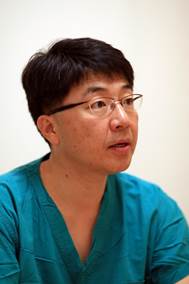
JUNG HWAN BAEK
University of Ulsan College of Medicine - Seoul, Korea
Professor Jung Hwan Baek is a radiologist and professor at University of Ulsan College of Medicine, who is dedicated in thyroid & head/neck imaging and intervention. He has been working in the field for 23 years.
As the chief of Research Affair in Asan Medical Center, he has considerable experience with clinical trials and interventions of thyroid and neck diseases. He also has been serving on multiple national and international committees and a President of Korean Society of Thyroid Radiology.
He has established advanced diagnostic and interventional techniques including core needle biopsy, ethanol ablation (EA) and radiofrequency ablation (RFA) for thyroid and neck diseases. His research interests include thyroid and neck tumor imaging/intervention. He has published over 200 scientific papers and 7 book chapters. He has longstanding research relationships with many international collaborators who are in charge of diagnosis and treatment of thyroid diseases. He has conducted training program of thyroid including thyroid imaging, biopsy and non-surgical treatment (EA and RFA) at Asan Medical Center (Seoul, Korea), Asia, Europe and USA. Recently, he developed thyroid CAD system (S-Detect for thyroid) using an artificial intelligence.
As the chief of Research Affair in Asan Medical Center, he has considerable experience with clinical trials and interventions of thyroid and neck diseases. He also has been serving on multiple national and international committees and a President of Korean Society of Thyroid Radiology.
He has established advanced diagnostic and interventional techniques including core needle biopsy, ethanol ablation (EA) and radiofrequency ablation (RFA) for thyroid and neck diseases. His research interests include thyroid and neck tumor imaging/intervention. He has published over 200 scientific papers and 7 book chapters. He has longstanding research relationships with many international collaborators who are in charge of diagnosis and treatment of thyroid diseases. He has conducted training program of thyroid including thyroid imaging, biopsy and non-surgical treatment (EA and RFA) at Asan Medical Center (Seoul, Korea), Asia, Europe and USA. Recently, he developed thyroid CAD system (S-Detect for thyroid) using an artificial intelligence.

KLAUS HAUSEGGER
Klagenfurt State Hospital - Klagenfurt, Austria
CVIR’s Editor-in-Chief. Prof. Hausegger graduated from the Medical University of Graz in 1984 and became a full radiologist in 1992. Shortly after, he became an Assistant Professor at the Medical University of Graz.
He held positions as the Deputy Head of the Department of Radiology and the Department of Vascular and Interventional Radiology at the University Hospital of Graz. His research interests lie in the field of vascular interventions including hepatobiliary interventions, TIPS and neurointerventions. He is currently the Department Head of Diagnostic and Interventional Radiology at Klagenfurt State Hospital in Austria.
He held positions as the Deputy Head of the Department of Radiology and the Department of Vascular and Interventional Radiology at the University Hospital of Graz. His research interests lie in the field of vascular interventions including hepatobiliary interventions, TIPS and neurointerventions. He is currently the Department Head of Diagnostic and Interventional Radiology at Klagenfurt State Hospital in Austria.

LEANDRO CARDARELLI-LEITE
University of British Columbia, Canada
Radiologista pela Escola Paulista de Medicina (EPM-UNIFESP), com especialização em Radiologia Intervencionista pela Universidade de São Paulo (HCFMUSP) e posteriormente pela University of British Columbia (UBC).

MASANORI INOUE
Keio University School of Medicine - Tokyo, Japan
EDUCATION
1993-1999: Keio University School of Medicine, Tokyo Japan
BOARD CERTIFICATION
Board of The Japanese society of Interventional Radiology
Board of Japan Radiological Society
MEDICAL LICENSURE
Japanese national license
MEMBERSHIP IN PROFESSIONAL ASSOCIATIONS
Member of The Japanese society of Interventional Radiology
Member of Japan Radiological Society
Member of Congress of Interventional Radiology Society of Europe
Member of Society of intervention Radiology
Specialty
Embolization, AVM treatment, Vascular intervention, Lymphatic intervention
GRADUATE TRAINING
Internship: 1999-2002 Keio University Hospital Tokyo Japan
Residency: 2002-2005Kawasaki municipal Hospital
Fellowship2005-2006 Keio University Hospital Tokyo Japan
2006-2007 Kawasaki municipal Hospital
2007-2012 Keio University Hospital Tokyo Japan
2013-2014 Hiratsuka City hospital
2015- Staff of IR division Diagnostic Radiology, Keio university
2019- Assistant Professor of Diagnostic Radiology, Keio University
1993-1999: Keio University School of Medicine, Tokyo Japan
BOARD CERTIFICATION
Board of The Japanese society of Interventional Radiology
Board of Japan Radiological Society
MEDICAL LICENSURE
Japanese national license
MEMBERSHIP IN PROFESSIONAL ASSOCIATIONS
Member of The Japanese society of Interventional Radiology
Member of Japan Radiological Society
Member of Congress of Interventional Radiology Society of Europe
Member of Society of intervention Radiology
Specialty
Embolization, AVM treatment, Vascular intervention, Lymphatic intervention
GRADUATE TRAINING
Internship: 1999-2002 Keio University Hospital Tokyo Japan
Residency: 2002-2005Kawasaki municipal Hospital
Fellowship2005-2006 Keio University Hospital Tokyo Japan
2006-2007 Kawasaki municipal Hospital
2007-2012 Keio University Hospital Tokyo Japan
2013-2014 Hiratsuka City hospital
2015- Staff of IR division Diagnostic Radiology, Keio university
2019- Assistant Professor of Diagnostic Radiology, Keio University

MATTHEW JOHNSON
Indiana University School of Medicine, EUA
I am Professor of Radiology and Surgery, Gary J Becker Professor of Radiology Research, Director of Clinical Research in the Department of Radiology, and Director of Interventional Oncology in the Indiana University School of Medicine. The majority of my clinical practice is devoted to the treatment of patients with cirrhosis and/or hepatic malignancies. I am the Primary Investigator for the PRESERVE, a multicenter study of inferior vena cava filter use in the United States, which completed enrollment ( with 1430 subjects) in March of this year. I have spent several years on the Society of Interventional Radiology Executive Council and was elected as SIR Secretary this year. As such, I will be SIR President in 2021.

MAXIM ITKIN
University of Pennsylvania, USA
Dr. Itkin is a Professor of Radiology and Pediatrics at the University of Pennsylvania and where he is a director of the Center for Lymphatic Imaging and Interventions.
Dr. Itkin is nationally and internationally recognized for his clinical and research expertise in an interventional treatment of the lymphatic disorders. Over the past 15 years, Dr. Itkin has been actively involved in the development of image-guided interventions of the lymphatic system (Thoracic Duct Embolization, liver lymphatic embolization, interstitial lymphatic embolization etc.) as a treatment of lymphatic disorders. Dr. Itkin developed intranodal lymphangiogram, as a substitute pedal lymphangiogram. This method opened new horizons for lymphatic interventions. Dr. Itkin developed contrast enhanced MR lymphangiogram for non-invasive dynamic imaging of the lymphatic anatomy. This technique led to the discovery of pathophysiology and treatment of plastic bronchitis, neonatal chylothorax, congenital lymphodysplasia and protein loosing enteropathy.
Dr. Itkin has lectured extensively nationally and internationally and has 90 peer reviewed publications, reviews and editorials in leading journals. He is a member of many national and international professional societies and in 20011 was inducted into the Society of the Interventional Radiology as a Fellow member as recognition of significant contributions to the field of cardiovascular and interventional radiology.
Dr. Itkin is nationally and internationally recognized for his clinical and research expertise in an interventional treatment of the lymphatic disorders. Over the past 15 years, Dr. Itkin has been actively involved in the development of image-guided interventions of the lymphatic system (Thoracic Duct Embolization, liver lymphatic embolization, interstitial lymphatic embolization etc.) as a treatment of lymphatic disorders. Dr. Itkin developed intranodal lymphangiogram, as a substitute pedal lymphangiogram. This method opened new horizons for lymphatic interventions. Dr. Itkin developed contrast enhanced MR lymphangiogram for non-invasive dynamic imaging of the lymphatic anatomy. This technique led to the discovery of pathophysiology and treatment of plastic bronchitis, neonatal chylothorax, congenital lymphodysplasia and protein loosing enteropathy.
Dr. Itkin has lectured extensively nationally and internationally and has 90 peer reviewed publications, reviews and editorials in leading journals. He is a member of many national and international professional societies and in 20011 was inducted into the Society of the Interventional Radiology as a Fellow member as recognition of significant contributions to the field of cardiovascular and interventional radiology.

MICHAEL DRABKIN
Dr. Drabkin completed his undergraduate education at Columbia University in New York City. After graduating from medical school at the State University of New York at Syracuse in 2013, he completed a surgical internship at The Mount Sinai Hospital in New York City. Dr. Drabkin completed his radiology residency at Nassau University Medical Center on Long Island and fellowship in Vascular and Interventional Radiology at Memorial Sloan Kettering Cancer Center in New York City.
Dr. Drabkin has authored many scientific abstracts and manuscripts related to diagnostic and interventional radiology, and has served as a reviewer for international journals. He has presented his research at numerous international conferences.
Dr. Drabkin has a strong interest in Interventional Oncology and enjoys a variety of oncologic and non-oncologic interventions. Other special interests of his include quality improvement, operations, and the business and politics of medicine. Dr. Drabkin serves on the Advocacy, Health Policy, & Economics Committee of the Society of Interventional Radiology (SIR).
Dr. Drabkin has authored many scientific abstracts and manuscripts related to diagnostic and interventional radiology, and has served as a reviewer for international journals. He has presented his research at numerous international conferences.
Dr. Drabkin has a strong interest in Interventional Oncology and enjoys a variety of oncologic and non-oncologic interventions. Other special interests of his include quality improvement, operations, and the business and politics of medicine. Dr. Drabkin serves on the Advocacy, Health Policy, & Economics Committee of the Society of Interventional Radiology (SIR).
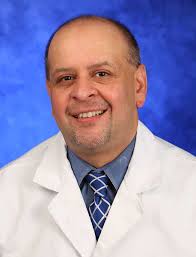
NAVESH SHARMA
Dr. Sharma is an Associate Professor in the Department of Radiation Oncology at the Penn State Milton Hershey Cancer Center and Penn State University School of Medicine. He is also the Section Chief of Radiation Oncology at the Penn State Health St. Joseph Cancer Institute. He previously started the liver SBRT program at and subsequently led one of the largest liver directed therapy programs in the country while at the University of Maryland Medical Center. He is the US principal investigator for the SIRFLOX/FOXFIRE/FOXFIRE Global family of phase III international trials for early radioembolization in liver predominant metastatic colorectal cancer and also one of the most experienced radiation oncologists with regards to use of Y90 SIRT. On a national level, Dr. Sharma is the gastrointestinal disease site team leader for the American College of Radiation Oncology, a GI board examiner for the American Board of Radiology, and a member of the ASTRO Health Policy Council.

OTTO VAN DELDEN
University of Amsterdam, Netherlands
Received Radiology training at the Academic Medical Center (AMC) of the University of Amsterdam in the Netherlands as well as Fellowship body imaging and intervention at St. Paul’s Hospital, University of British Columbia, Vancouver, Canada.
Professor van Delden has been an Interventional radiologist since 1998 at the AMC, which is a tertiary referral center for cardiovascular disease and benign and malignant gastro-intestinal and hepatobiliary & pancreatic disease. He is currently focussing on hepatobiliary interventions & interventional oncology and has authored or co-authored over 120 papers in peer-reviewed journals.
Professor van Delden has been an Interventional radiologist since 1998 at the AMC, which is a tertiary referral center for cardiovascular disease and benign and malignant gastro-intestinal and hepatobiliary & pancreatic disease. He is currently focussing on hepatobiliary interventions & interventional oncology and has authored or co-authored over 120 papers in peer-reviewed journals.

PATRICIO PALAVECINO
Universidad de Chile, Chile
Prof. Asistente
Posee título de Enfermero otorgado por la Universidad de Chile emitido el 26 de Octubre de 1982
Posee título de Médico Cirujano otorgado por la Universidad de Chile emitido el 22 de Enero de 1993
Posee título o grado académico de especialista en Radiología otorgado por la Universidad de Chile, emitido con fecha 14 de Diciembre de 1999.
Posee título de Enfermero otorgado por la Universidad de Chile emitido el 26 de Octubre de 1982
Posee título de Médico Cirujano otorgado por la Universidad de Chile emitido el 22 de Enero de 1993
Posee título o grado académico de especialista en Radiología otorgado por la Universidad de Chile, emitido con fecha 14 de Diciembre de 1999.

RICARDO HANEL
Baptist Neurological Institute - Jacksonville, USA
Ricardo Hanel is internationally recognized worldwide for his contributions to Neurosurgery and Endovascular field in the treatment of acute stroke, aneurysms and vascular malformations, among other cerebrovascular and skull base diseases. Graduated at Universidade Federal do Parana, his skills soon took him to the most recognized fellowship training programs, like Barrow Neurological Institute in Phoenix and New York State University in Bufallo. He is the current Director of Baptist Neurological Institute and hold a position as Endowed Chair of Stroke and Cerebrovascular Surgery in Jacksonville, Florida, USA. He has an special dedication to neurological surgery and endovascular research, supporting programs, inspiring young neurosurgeons and medical students across the world.

RAFAEL SATIRO
Engenheiro Físico com graduação sanduíche em Engenharia Biomédica na Fachhochschule Gelsenkirchen, com mais de 10 anos de experiência na área da saúde e mais de 1000 horas de treinamentos e atendimentos de mentoria de inteligência emocional aplicada.
É Mastercoach e trainer formado pelo instituto Brasileiro de Coaching e certificado na International Coaching Federation, analista comportamental Disc , practitioner em Programação Neuro Linguística, hipnose clínica e Constelações Sistêmicas aplicada ao coaching.
Além disso, possui também MBA em Gestão de Projetos pela Business School São Paulo e Gestão de Saúde pela USP. Atualmente , é líder mundial de tomografia super premium na principal empresa do ramo, a General Electric, onde auxilia a melhorar experiências de saúde da humanidade.
É Mastercoach e trainer formado pelo instituto Brasileiro de Coaching e certificado na International Coaching Federation, analista comportamental Disc , practitioner em Programação Neuro Linguística, hipnose clínica e Constelações Sistêmicas aplicada ao coaching.
Além disso, possui também MBA em Gestão de Projetos pela Business School São Paulo e Gestão de Saúde pela USP. Atualmente , é líder mundial de tomografia super premium na principal empresa do ramo, a General Electric, onde auxilia a melhorar experiências de saúde da humanidade.

RICARDO PAZ-FUMAGALLI
Mayo Clinic - Jacksonville, FL, EUA
INTERESTS
EDUCATION
ACTIVITIES AND HONORS
Certifications
Awards and honors
PROFESSIONAL MEMBERSHIPS
- Percutaneous treatment of aneurismal and occlusive arterial disease and portal hypertension
- Minimally invasive cancer therapies, including radiofrequency ablation, cryotherapy and chemoembolization of tumors
- Liver cancer treatment with yttrium-90 radioembolization
- Diagnosis and treatment of venous malformations, arteriovenous malformations, hemangiomas
EDUCATION
| 1993 | Fellow - Vascular/Interventional Radiology Medical College of Wisconsin Affiliated Hospitals |
| 1992 | Resident - Diagnostic Radiology Medical College of Wisconsin Affiliated Hospitals |
| 1989 | Resident - Diagnostic Radiology Albany Medical College |
| 1988 | Internship - Transitional Training Program St. Joseph Mercy Hospital Ann Arbor, Michigan |
| 1987 | MD - Facultad de Medicina Universidad Francisco Marroquin |
| 1982 | BS - Pre-medical Studies Universidad Francisco Marroquin |
ACTIVITIES AND HONORS
Certifications
| 2017 | Interventional Radiology and Diagnostic Radiology American Board of Radiology |
Awards and honors
| 2007 | Certificate of Merit Award recipient: "Extrahepatic Portal Biliopathy: not always an insignificant lesion" electronic exhibit American Roentgen Ray Society |
| 2002 | First Prize, Abstract Presentation: Tratamiento de Neoplasia Renal con Radiofrecuencia Ablativa: Experiencia Inicial. II Encuentro de Intervencionismo Guiado por Imagenes. Sociedad Iberoamericana de Intervencionismo, Zaragoza, Espana |
| 2001 | Distinguished Faculty Award Puncture Site Management Workshop. Society for Cardiovascular and Interventional Radiology (SCVIR) 26th Annual Scientific Meeting, San Antonio |
| 1987 | Intern of the Year St. Joseph Mercy Hospital, University of Michigan Medical School |
PROFESSIONAL MEMBERSHIPS
| 2017 - present | Member Vascular Disease Speciality Council |
| 2013 - present | Member Enterprise Radiology Equipment, Enterprise Supply Task Force, Department of Radiology |
| 2012 - present | Member Inverventional Radiology Operations Committee |
| 2011 - 2012 | Member Graduate Education Committee-Program Directors Committee, Mayo Clinic Florida Committees |
| 2005 - present | Member Expense Management |
| 2002 - present | Member Emergency Medicine Practice Team |
| 2001 - 2015 | Member Duval County Medical Society |
| 1997 - 1998 | Task force U.S. Department of Veterans Affairs |
| 1996 - 1998 | Member Conscious Sedation Task Force, Zablocki VA Medical Center |
| 1994 - 2008 | Member American Roentgen Ray Society |
| 1993 - present | Member Surgical Case and Invasive Procedure, Zablocki VA Medical Center |
| 1993 - present | Member Society of Interventional Radiology |
| 1988 - 2008 | Member Radiological Society of North America |

ROBERT MORGAN
St George’s University Hospitals NHS Foundation Trust - London, UK
President of the Cardiovascular and Interventional Society of Europe (CIRSE)
Consultant Vascular and Interventional Radiologist at St George’s University Hospitals NHS Foundation Trust, President of the Cardiovascular and Interventional Society of Europe (CIRSE).
CIRSE is the largest interventional radiology society worldwide and has over 7,000 members.
While the majority of CIRSE members work in Europe, many hail from as far afield as Japan, New Zealand, Argentina and Canada.
CIRSE is closely involved with the education and training of interventional radiologists, and Dr Morgan was fundamentally involved in the creation of the European Board of Interventional Radiology examination (EBIR).
Since its inception in 2010, the EBIR has become recognised as the premier examination for the completion of training in interventional radiology and is taken by candidates from all over the world.
CIRSE is the largest interventional radiology society worldwide and has over 7,000 members.
While the majority of CIRSE members work in Europe, many hail from as far afield as Japan, New Zealand, Argentina and Canada.
CIRSE is closely involved with the education and training of interventional radiologists, and Dr Morgan was fundamentally involved in the creation of the European Board of Interventional Radiology examination (EBIR).
Since its inception in 2010, the EBIR has become recognised as the premier examination for the completion of training in interventional radiology and is taken by candidates from all over the world.
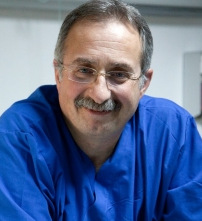
SARUHAN CERKIGE
Hacettepe University Hospitals - Ankara, Turkey
Neuroradiology/Interventional Neuroradiology, Hacettepe University Hospitals, Ankara. Major Fields of Interest during the last 15 years: dedicated himself with his partner Dr Saatci developing and improving endovascular treatment techniques for the treatment of cerebral aneurysms and AVMs, while focusing on training of interventional neuroradiologists worldwide about advanced endovascular treatment techniques either in his institution with international workshops/live case demonstration meetings or proctoring/performing cases outside of his institution.

SERGIO SIERRE
Hospital de Pediatria Prof. J. P. Garrahan - Buenos Aires, Argentina
Vice-president of the Latinamerican Society of Interventional Radiology (SIDI)
Dr. Sergio Sierre is the Director of the Department of Interventional Radiology at Hospital de Pediatria Prof. J. P. Garrahan, in Buenos Aires, Argentina. He is also the Fellowship Director for the Pediatric Interventional Radiology program.
Dr. Sierre graduated from the National University of Cordoba Medical School (Argentina) in 1992. After the radiology residency training, Dr. Sierre completed two fellowships in Vascular and Interventional Radiology, in Paris and Strasbourg (France), from 1996 to 1998.
Dr. Sierre is fellow member of SIR and CIRSE and is currrently the vice-president of the Latinamerican Society of Interventional Radiology (SIDI).
Dr. Sierre has expertise in a broad range of vascular and non-vascular procedures; research interests include vascular anomalies, catheter guided and hemodialysis interventions.
Dr. Sierre graduated from the National University of Cordoba Medical School (Argentina) in 1992. After the radiology residency training, Dr. Sierre completed two fellowships in Vascular and Interventional Radiology, in Paris and Strasbourg (France), from 1996 to 1998.
Dr. Sierre is fellow member of SIR and CIRSE and is currrently the vice-president of the Latinamerican Society of Interventional Radiology (SIDI).
Dr. Sierre has expertise in a broad range of vascular and non-vascular procedures; research interests include vascular anomalies, catheter guided and hemodialysis interventions.

SIMONE COMELLI
Azienda Ospedaliera G. Brotzu, Cagliari, Italy
Medical Doctor Graduated at Universita’ degli studi di Torino in 26/03/1996 (Thesis: Cervical an facial district tumors: modern reconstructive techniques”).
April 1995 ATLS (Advanced Trauma Life Support)
April 1996 BLS e ACLS (Basic Life Support Provider e Advanced Cardiac Life Support Provider).
II session 1996 qualifying examination and registration in the Turin Albo Professionale dell’Ordine dei Medici Chirurghi starting 11/02/1997.
5.11.2002 Specialization in Vascular Surgery (Director A. M. Raso) 70/70 and laude (thesis “ICA Restenosis endovascular treatment following endoarteriectomy”)
Starting 1999 until 2002 fellow at the Vascular and Interventional Radiology Department, S. Giovanni Battista Hospital (Molinette Hospital) directed by Dott. C. Rabbia.
20.12.2006 Specialization in Radiology (Director Prof. G. Gandini) 70/70 and laude (thesis: “A-V dialitic fistulas salvage using transluminal angioplasty)
Starting January 2003 until April 2005 fellow at the University Radiology Department (Università di Torino), Molinette Hospital.
Starting May 2005 works at the Radiology Department at S. Giovanni Bosco Hospital (Turin) as Consultant Interventional Radiologist and Neuroradiologist (directed by Dr. C. A. Cametti and G.P. Vaudano) in cooperation also with the University Neuroradiology Department directed by Prof. B. Bradac.
Extensive experience:
Vascular Ultrasonography
body CT and CT-Angio,
neuro CT and CT-Angio
Vascular and Interventional Radiology
April 1995 ATLS (Advanced Trauma Life Support)
April 1996 BLS e ACLS (Basic Life Support Provider e Advanced Cardiac Life Support Provider).
II session 1996 qualifying examination and registration in the Turin Albo Professionale dell’Ordine dei Medici Chirurghi starting 11/02/1997.
5.11.2002 Specialization in Vascular Surgery (Director A. M. Raso) 70/70 and laude (thesis “ICA Restenosis endovascular treatment following endoarteriectomy”)
Starting 1999 until 2002 fellow at the Vascular and Interventional Radiology Department, S. Giovanni Battista Hospital (Molinette Hospital) directed by Dott. C. Rabbia.
20.12.2006 Specialization in Radiology (Director Prof. G. Gandini) 70/70 and laude (thesis: “A-V dialitic fistulas salvage using transluminal angioplasty)
Starting January 2003 until April 2005 fellow at the University Radiology Department (Università di Torino), Molinette Hospital.
Starting May 2005 works at the Radiology Department at S. Giovanni Bosco Hospital (Turin) as Consultant Interventional Radiologist and Neuroradiologist (directed by Dr. C. A. Cametti and G.P. Vaudano) in cooperation also with the University Neuroradiology Department directed by Prof. B. Bradac.
Extensive experience:
Vascular Ultrasonography
body CT and CT-Angio,
neuro CT and CT-Angio
Vascular and Interventional Radiology

STEPHEN B SOLOMON
Memorial Sloan Ketterin Cancer Center, Chief, Interventional Radiology Service, USA
I am an interventional radiologist who uses x-ray, CT, ultrasound, and MRI to perform procedures less invasively. I am Chief of the Interventional Radiology Service in the Department of Radiology and also Director of Memorial Sloan Kettering’s Center for Image-Guided Interventions (CIGI). At CIGI, we are combining imaging processes and disciplines to develop and apply new image-guided cancer therapies to more effectively treat and cure disease.
Interventional radiology is an increasingly common approach to treating cancer. We use images to see the tumor and the blood vessels that supply it. These images help guide our minimally invasive tools to the site of the tumor so we can use several diagnostic and therapeutic techniques. Patients who have interventional radiological procedures do not need a large incision. They often don’t need general anesthesia. In many cases, these procedures are less risky, and recovery times are shorter than with traditional surgery.
My particular area of interest is treating tumors with thermal ablation. In this technique, we use imaging to guide a needle to a target tumor and then destroy it with either heat (radiofrequency ablation) or extreme cold (cryoablation). I treat kidney cancer, liver cancer, lung cancer, and bone cancer with these procedures. I also perform hepatic artery embolization. For this technique, we inject particles into the main blood vessel that supplies a tumor to cut off its blood supply.
Some of my current research projects involve evaluating a new ablation tool called irreversible electroporation (NanoKnife®). I am also studying using a CT-guided clinical robot to perform procedures more accurately and using PET images to monitor the health of patients who have undergone ablation. In addition, I am looking for ways to boost the immune system’s reaction to cancer cells after tumor ablation. I lead a research lab of dedicated colleagues. We work together to improve image-guided cancer interventions.
Interventional radiology is an increasingly common approach to treating cancer. We use images to see the tumor and the blood vessels that supply it. These images help guide our minimally invasive tools to the site of the tumor so we can use several diagnostic and therapeutic techniques. Patients who have interventional radiological procedures do not need a large incision. They often don’t need general anesthesia. In many cases, these procedures are less risky, and recovery times are shorter than with traditional surgery.
My particular area of interest is treating tumors with thermal ablation. In this technique, we use imaging to guide a needle to a target tumor and then destroy it with either heat (radiofrequency ablation) or extreme cold (cryoablation). I treat kidney cancer, liver cancer, lung cancer, and bone cancer with these procedures. I also perform hepatic artery embolization. For this technique, we inject particles into the main blood vessel that supplies a tumor to cut off its blood supply.
Some of my current research projects involve evaluating a new ablation tool called irreversible electroporation (NanoKnife®). I am also studying using a CT-guided clinical robot to perform procedures more accurately and using PET images to monitor the health of patients who have undergone ablation. In addition, I am looking for ways to boost the immune system’s reaction to cancer cells after tumor ablation. I lead a research lab of dedicated colleagues. We work together to improve image-guided cancer interventions.

THOMAS BARTHE
Stryker Neurovascular, France
International Health Economics operations specialist at Stryker Neurovascular
Graduated with a Master degree in Health Economics from Paris-Dauphine University (FRANCE)
Pharmacist, PhD candidate at Lille II University
Graduated with a Master degree in Health Economics from Paris-Dauphine University (FRANCE)
Pharmacist, PhD candidate at Lille II University
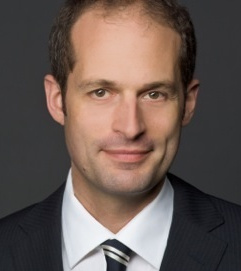
THOMAS KRÖNCKE
Klinikum Augsburg - Augsburg, Germany
Klinikum Augsburg · Department of Diagnostic and Interventional Radiology, Augsburg, Germany

TIMO KRINGS
University of Toronto, Canada
Dr. Krings studied medicine in Aachen, Germany and at Harvard Medical School in Boston. After residency training in Neuroradiology in Aachen with Prof. Armin Thron, he completed a neurointerventional fellowship with Professor Pierre Lasjaunias in Paris, France and subsequently joined the Neuroradiology division of the University of Toronto as a diagnostic and interventional Neuroradiologist in 2008. He is currently cross appointed to Radiology and Neurosurgery at UHN and as an interventional Neuroradiologist at the Hospital for Sick Children. He is a Full Professor of Radiology and Surgery, the Chief of Radiology at the Toronto Western Hospital and the Head of the Division of Diagnostic and Interventional Neuroradiology at the University Health Network, Mount Sinai and Women’s College Hospitals. He holds the David Braley and Nancy Gordon Chair in Interventional Neuroradiology at the University of Toronto.
Focusing his research efforts on Imaging and Treatment of Neurovascular Diseases, Dr. Krings has published more than 350 peer reviewed articles, and approximately 30 book chapters and four books on spinal, pediatric and interventional neuroradiology, and neurovascular anatomy.
His current research focusses on the prediction of brain bleeding from brain vascular malformations using a multidiscplinary approach, development of novel methods to treat these life changing events and estimating the relative effectiveness of treatments to determine the impact on Health Care. To this end he is leading a team of Neuro-imagers, Neurointerventionalists, Computational Scientists, Genetist Biologists and Epidemiologists within the Division of Neuroradiology.
Dr. Krings’s leadership in the field of Neuroradiology is bolstered by his distinguished grants and awards, including the Scientific Award of the European Society of Neuroradiology, the Lucien Appel Prize, and the Founders Award in Interventional Neuroradiology of the ESNR. For the development of the Neuroradiology Program in Toronto he won the Anderson Award of the Wightman-Berris Academy and was granted the Edward Lansdown Award for outstanding teaching in the Residency Program of the University of Toronto.
Focusing his research efforts on Imaging and Treatment of Neurovascular Diseases, Dr. Krings has published more than 350 peer reviewed articles, and approximately 30 book chapters and four books on spinal, pediatric and interventional neuroradiology, and neurovascular anatomy.
His current research focusses on the prediction of brain bleeding from brain vascular malformations using a multidiscplinary approach, development of novel methods to treat these life changing events and estimating the relative effectiveness of treatments to determine the impact on Health Care. To this end he is leading a team of Neuro-imagers, Neurointerventionalists, Computational Scientists, Genetist Biologists and Epidemiologists within the Division of Neuroradiology.
Dr. Krings’s leadership in the field of Neuroradiology is bolstered by his distinguished grants and awards, including the Scientific Award of the European Society of Neuroradiology, the Lucien Appel Prize, and the Founders Award in Interventional Neuroradiology of the ESNR. For the development of the Neuroradiology Program in Toronto he won the Anderson Award of the Wightman-Berris Academy and was granted the Edward Lansdown Award for outstanding teaching in the Residency Program of the University of Toronto.



















